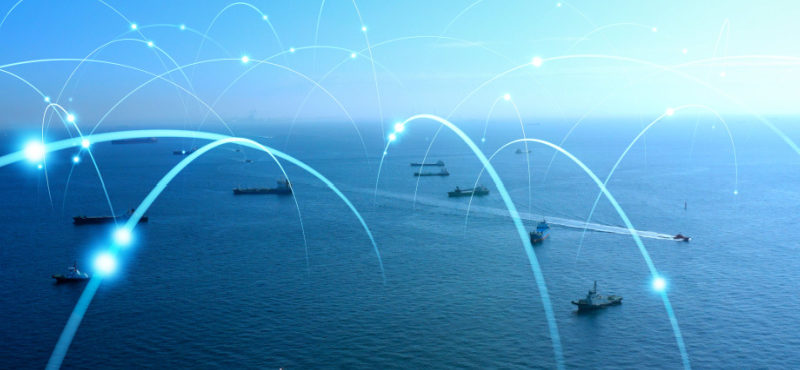Reliable communication is essential in the maritime industry to maintain safe operations and ensure smooth traversal of the world’s oceans and seas. Marine communications encompass ship-to-ship and ship-to-shore communications, with different channels and methods available depending on the type of vessel and where they are sailing.
The maritime industry is a complex network of channels to help ships navigate across the world and stay in contact with other vessels or shore-based control centers, which is why different tools and networks exist for different sets of circumstances.
How Maritime Communication Works
Depending on the vessel and the waters in which it is navigating, there may be several communication systems on board – with requirements varying by geographic area. Here is the breakdown of the communication channels:
A1: Ships operating between 20-30 nautical miles from the coast must have at least one Very High Frequency (VHF) radio system onboard, allowing for constant Digital Selective Calling (DSC) alerting in addition to a Maritime Safety Information (MSI) receiver.
A2: Ships traveling up to and over 400 nautical miles away from shore are covered under this section, however, in practice, it typically covers ships operating about 100 nautical miles off the shore without including ships in A1 areas. Boats operating in this range should have a radiotelephone in the MF radio range onboard and any equipment necessary in A1 areas.
A3: Excluding areas covered under A1 and A2, A3 covers ships that fall within the zone covered by geostationary satellites, approximately 70 degrees north and 70 degrees south latitude. Vessels operating within this range must have satellite communications equipment in addition to the same equipment requirements from A1 and A2 areas.
A4: This area includes waters in the Polar Region North and South of 70 degrees latitude, excluding areas covered under A1, A2, and A3. Ships operating in this range must have a High Frequency (HF) radio service in addition to all previous requirements from other areas.
HF marine communications services are widely available and cover all of the oceans traversed by ships. These systems and tools exist to assist with search and rescue operations in the event of an emergency and to keep mariners safe when at sea.
The International Maritime Organization (IMO) dictates that each ocean region must have at least two coastal stations – with all vessels carrying satellite terminals for Ship Security Alerts System (SSAS) and long-range tracking. Using these systems, mariners can navigate the oceans safely while remaining in contact with control centers.
Types Of Maritime Communication Systems
VHF radio systems continue to be an essential tool for communication between ships and ship-to-shore communications. While it remains widespread and effective, the system does have limitations due to its design. That is why other systems like DSC exist to allow for enhanced communication – including remote control commands for engaging signals.
Other advanced communications systems include satellites, Very Small Aperture Terminals (VSATs), and the Global Maritime Distress and Safety System (GMDSS). The GMDSS, in particular, uses integrated communications using satellite and terrestrial radio communication systems to transmit information and overcome the shortcomings of communication via VHF.
Additionally, in European waterways, the Automatic Transmitter Identification System is used in conjunction with a VHF radio system to transmit the vessel’s identity using a ten-digit code after each voice transmission. All of these systems combined make up today’s maritime communication systems and instruments.
Highland Wireless
Highland Wireless offers exceptional radio communications solutions and services to clients in the maritime industry to ensure reliable and effective communications between ships and control centers. To learn more about our services, speak with a representative from our team today.

